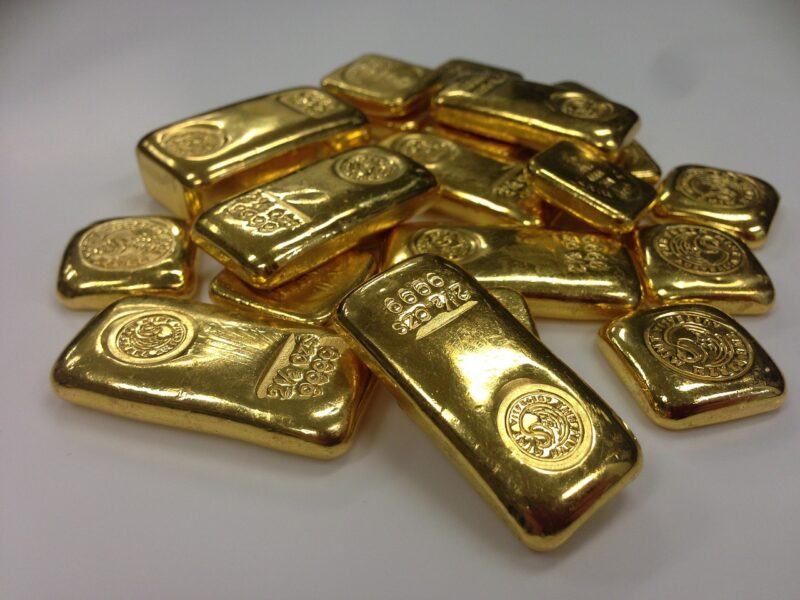Why Gold Is a Safe Haven for Investors During Economic Uncertainty
November 14, 2024

Gold has long been revered as a reliable store of value, particularly during times of economic turmoil and uncertainty. While stock markets fluctuate and fiat currencies can lose their purchasing power, gold’s intrinsic value has made it a compelling investment for generations. In this article, we will explore why gold is considered a safe haven for investors, especially in challenging economic times.
1. The Historical Significance of Gold
Gold has been a symbol of wealth and power for millennia, utilized in various cultures as currency, jewelry, and a medium for trade. The ancient Egyptians buried their pharaohs with gold because they believed it would provide prosperity in the afterlife. Throughout history, governments and central banks have hoarded gold to back their currencies, reinforcing its role as a stable financial asset. Even during crises, the allure of gold as a reliable investment persists.
Over the centuries, we have seen gold withstand significant global economic challenges, such as the Great Depression, World War I and II, and the 2008 financial crisis. In each case, investors turned to gold as the value of their paper assets dwindled, which helped them to preserve their wealth.
2. Gold’s Performance during Economic Downturns
Several studies indicate that during times of economic uncertainty, gold tends to perform significantly better than other asset classes. For instance, during the 2008 financial crisis, as stock markets plummeted, gold prices soared, reflecting a flight to safety among investors.
This trend is evident when analyzing gold’s performance during the COVID-19 pandemic. As the global economy faced unprecedented shutdowns, gold prices reached record highs in 2020. This performance attributes to several key factors:
- Inflation Hedge: Central banks often respond to economic problems by injecting liquidity into the financial system via low-interest rates and stimulus packages. These policies can lead to increased inflation, which diminishes the purchasing power of fiat currency. Gold, however, retains its value over time, making it an effective hedge against inflation.
- Currency Weakness: Economic uncertainty often leads to fluctuations in currency values. When major currencies like the U.S. dollar become weak or unstable, investors typically gravitate towards gold, which is seen as a universal currency that is not subject to drastic changes caused by government policies or economic bailouts.
- Market Volatility: Economic crises throw stock markets into tumult, leading to increased investor anxiety. Gold, with its relatively stable price movements, provides a refuge for investors looking to mitigate portfolio risk during downturns.
Thus, understanding the historical performance of gold during periods of economic decline is essential for investors considering this precious metal as a safe haven asset.
3. Psychological Factors Influencing Gold Investment
The psychological aspect of investing plays a significant role in gold’s status as a safe haven. In times of uncertainty, emotional responses to fear and anxiety prompt investors to seek security. Gold represents a tangible asset that has intrinsic value rather than just perceived value.
Various factors contribute to this psychological behavior:
- Cultural Beliefs: Many cultures historically consider gold a source of wealth and power. This deeply ingrained belief continues to influence how investors react in times of uncertainty.
- Historical Trust: The long-standing track record of gold as a reliable store of value fosters confidence among investors. Many see it as one of the few assets they can trust in a fluctuating economy.
- Loss Aversion: Investors often fear losing their wealth during economic downturns, leading to conservative investment strategies. Gold is viewed as a safe option that minimizes perceived investment risk during uncertain times.
Investors commonly confide more in gold as a shield against economic challenges, reinforcing its position as a safe haven asset.
4. Diversifying Your Investment Portfolio with Gold
When constructing a diversified investment portfolio, including gold can significantly enhance its resilience against economic volatility. Combining various asset classes in your portfolio reduces risk and increases stability. Here’s why:
- Negative Correlation: Gold often has a negative correlation with stocks, meaning that when stock prices drop, gold prices typically rise. This negative correlation ensures that when risks in the stock market increase, gold may compensate for those losses, keeping your investment earnings more stable over time.
- Stability and Protection: Gold provides a form of security during turbulent times, preserving wealth and potentially enhancing returns when combined with traditional investments ranging from stocks to bonds. By allocating a portion of your portfolio to gold, you improve your chances of weathering economic storms more effectively.
Many financial advisors recommend allocating around 5-10% of your portfolio to precious metals, including gold, as a means of diversifying investments and offering a buffer against market volatility.
5. Ways to Invest in Gold
Investors have several options when it comes to including gold in their portfolios. Each investment type has its own pros and cons:
- Physical Gold: Investors can purchase gold in the form of bars, coins, or jewelry. While holding physical gold provides tangible ownership, it also comes with storage and insurance costs.
- Gold ETFs: Exchange-traded funds allow investors to buy shares of a fund that tracks the price of gold without physically owning it. This option offers convenience and liquidity while minimizing storage concerns.
- Gold Mining Stocks: Investing in companies that mine gold can provide exposure to the metal’s value along with potential dividends. However, this option can carry higher risks due to market fluctuations affecting individual stocks.
- Gold Futures and Options: For advanced investors, gold futures and options allow speculation on gold prices but come with a higher level of risk and complexity.
Selecting the best method to invest in gold should depend on your financial goals, risk tolerance, and market knowledge.
Conclusion
In conclusion, gold’s reputation as a safe haven for investors during economic uncertainty is well-founded. Its historical significance, reliable performance during downturns, psychological appeal, and role in portfolio diversification all contribute to its standing as a fortress for wealth preservation. As global economies remain fragile, gold will likely continue to shine as a beacon of stability amidst chaos. If you are considering investing in gold, take the time to research and determine how it can best fit into your investment strategy.
By embracing the wisdom of gold as a hedge against economic instability, investors can safeguard their assets and maintain financial resilience in the face of uncertainty.








